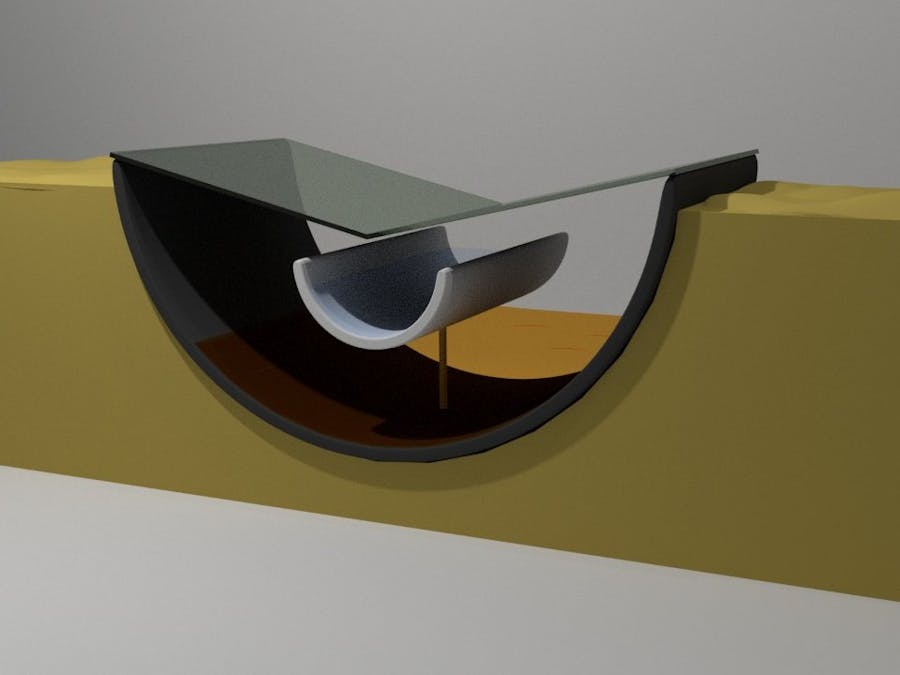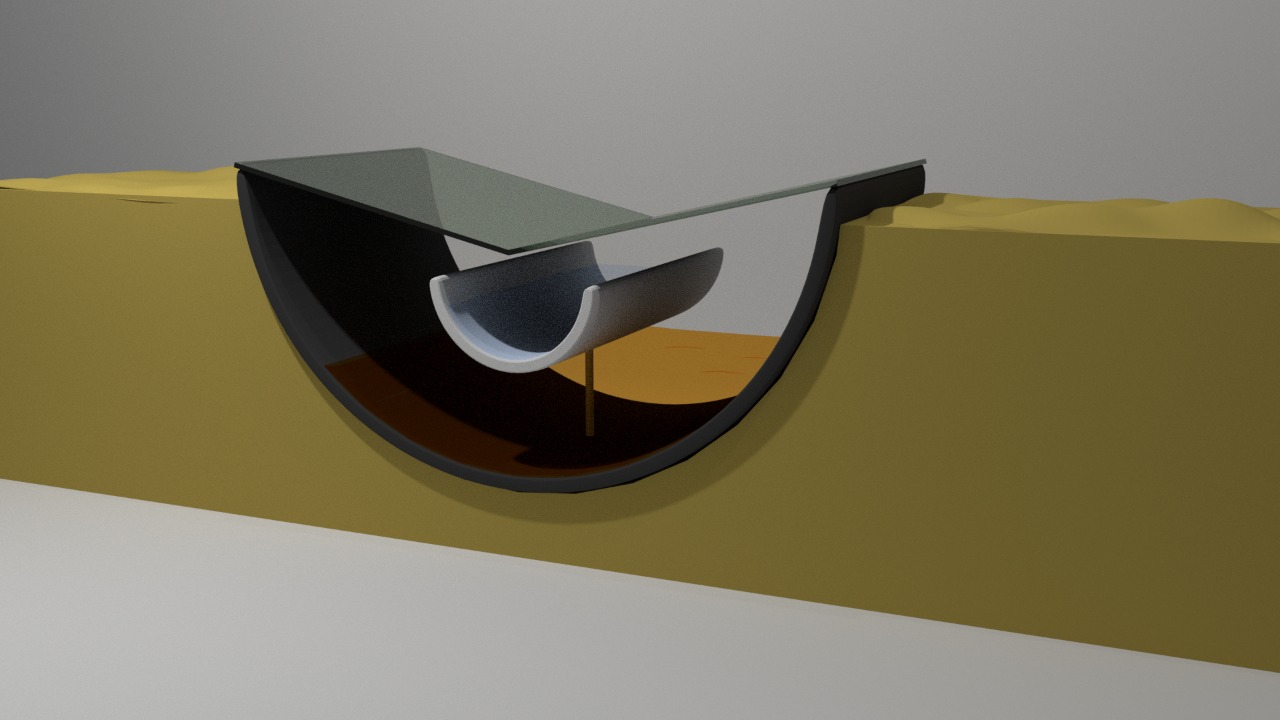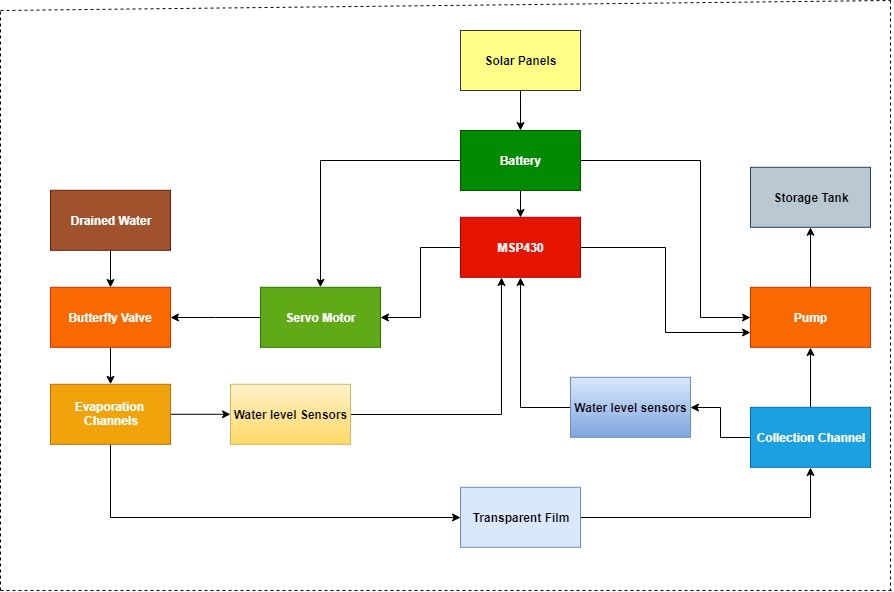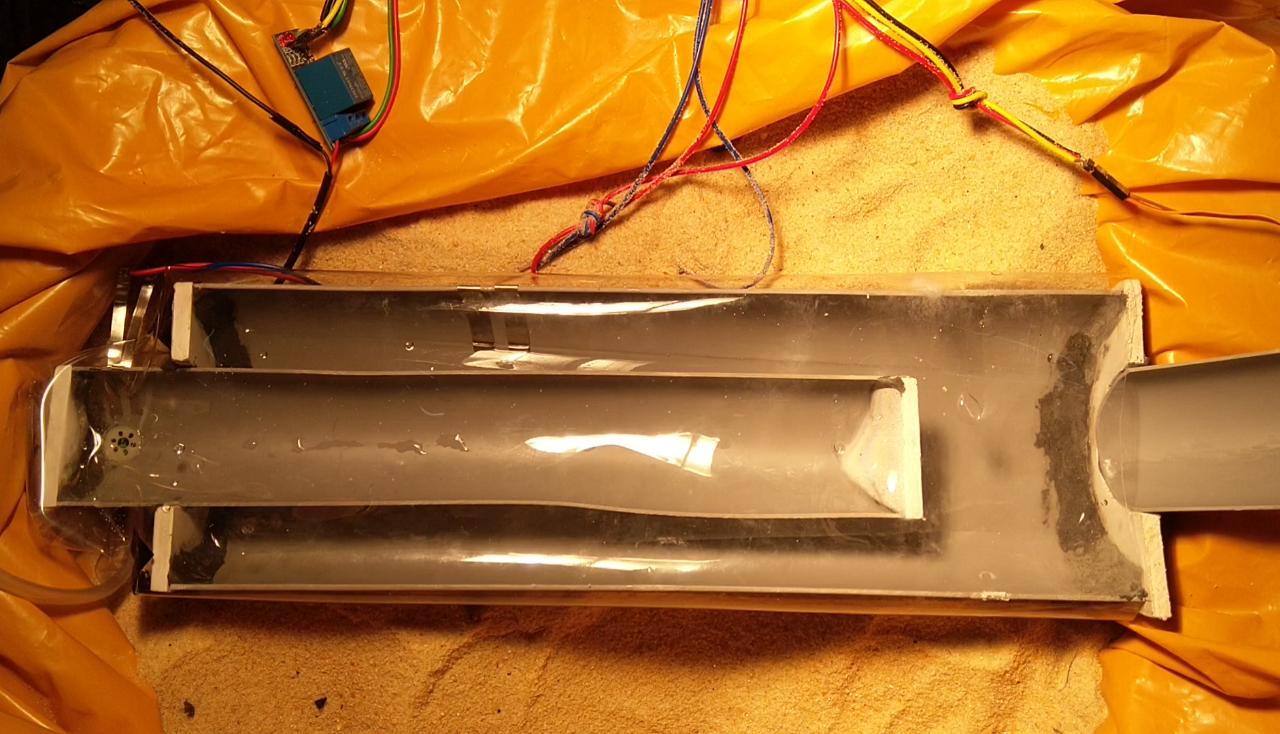I, Manash Sharma have collaborated with my fellow students Jayanth Manjunath and Harshit Kumar from National Institute Of Technology Karnataka, India (NITK), to create this Solar Water Distiller. In the following report, I will roughly take you across the project.
OverviewNITK in summers faces a drastic shortage of water. Taps in washrooms and Water purifiers run dry. Water Harvesting is one of the brightest solutions to solve this problem. We have decided to set up a Solar Water Purifier on the NITK beach to convert the drainage water into potable drinking water. Solar Water Purifier will use the simple principle of distillation to separate the pure water from its dissolved components.
This distiller will convert the entire drainage water from the college into pure drinking water free from soluble and insoluble impurities. This idea has been utilized by the tribe Bedouin living in the Sahara Desert for centuries to meet their water needs.
Feasibility of This ProjectThis Solar Water Purifier is very economical as it utilizes everyday products. There is hardly any energy expenditure as most of the energy for the process is obtained from the Sun. The day temperature of NITK easily reaches 30-35C. With planned concentration of the incident irradiation, the sand which has a high specific heat capacity can be easily heated up to higher temperatures. The maintenance cost of Solar Water Purifier is also negligible as the components that are being used are anti-corrosive and water resistant hence it can be taken up as a long term project in NITK. The manpower required for this process is minimal as the entire process is self-automated. Barring the initial cost of setup, this can not only meet the Water Needs of our campus but also reduce our burden on Mangalore City Corporation for water. The space required for this setup is not that much as only a few hectares of unused NITK beach will be required and since its environment-friendly project, getting clearance from the government will not be an issue.
Scalability of This ProjectThe beauty of the Solar Water Purifier lies in its simplicity. Scaling it into a long term project to meet college water needs will not require much investment considering the cost of materials utilized and the amount of energy consumed.
The project can be taken up in multiple phases wherein we begin by distilling small amount of water enough to meet requirements of one floor of a particular hostel, following the success of the first phase, this project can be expanded in the following phases.
Project TutorialAboutThis project is titled Solar Water Distiller. It uses the basic principle of distillation to purify Sewage Water into Pure Potable Water. It is a prototype of what can be in future implemented on the NITK Beach.
PrincipleThere are two PVC pipes in this project. The lower one of the bigger radius holds the dirty sewage water whereas the upper one of the lower radius holds the fresh distilled water. The water in the lower PVC pipe is heated using a 1000W halogen lamp (which acts a prototype of the Sun in this experiment). The rays entering the transparent sheet heat the water and the convection currents cannot escape out of the model thus creating a greenhouse effect, thereby increasing the temperature inside. The sand on the outside has a low specific heat capacity. Therefore, it gets heated up faster and the water inside the lower PVC pipe is heated using conduction. Thus all the three modes of heat transportation i.e. conduction, convection and radiation are used to heat the water.
After 10-15 minutes of continuous exposure of the model to the Halogen Lamp, the water begins to evaporate and condense on the Transparent Sheet above. The Transparent Sheet is shaped in such a way that it is V in shape so that the water condensed, due to gravity flows to directly above the Upper PVC pipe. Then the condensation process happens and the water collects in the upper pipe.
ProcedureStep 1: A butterfly valve is used to control the inlet flow into the lower pipe. Initially, the valve is open and lets the water flow in. As the water reaches the desired water level, the water sensors and MSP430 send the command to the servo motor which closes the valve and the water flow stops.
Step 2: The halogen lamp heats up the water in the lower pipe and the water evaporates.
Step 3: The water vapors condense on the transparent sheet and when the size of condensed water droplets increase, they get collected in the upper pipe.
Step 4: Once the water in the Upper pipe reaches a certain level, water sensors and MSP 430 activates the Water Pump and the pure condensed water is drained out of pipe through a pipe.
ConclusionOverall, it's an intermediate level hard project which can be taken up by any group of enthusiastic students/professionals and will take about 6-7 hours to complete it.



















Comments
Please log in or sign up to comment.